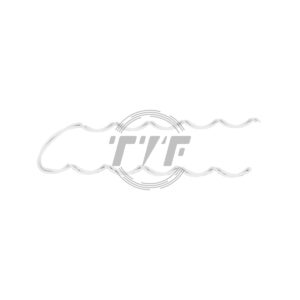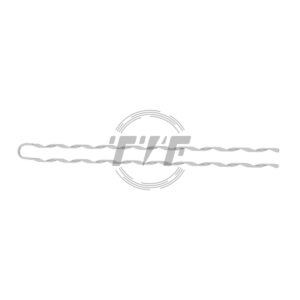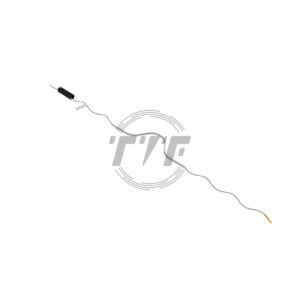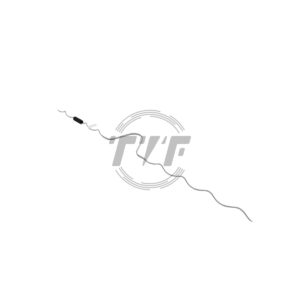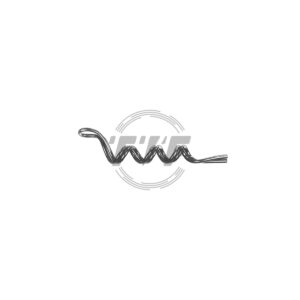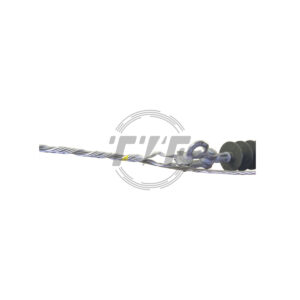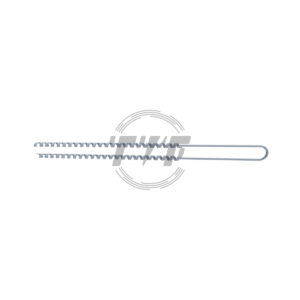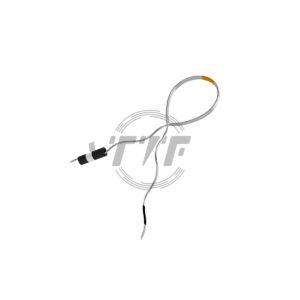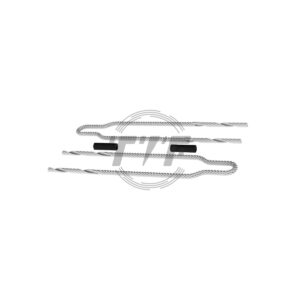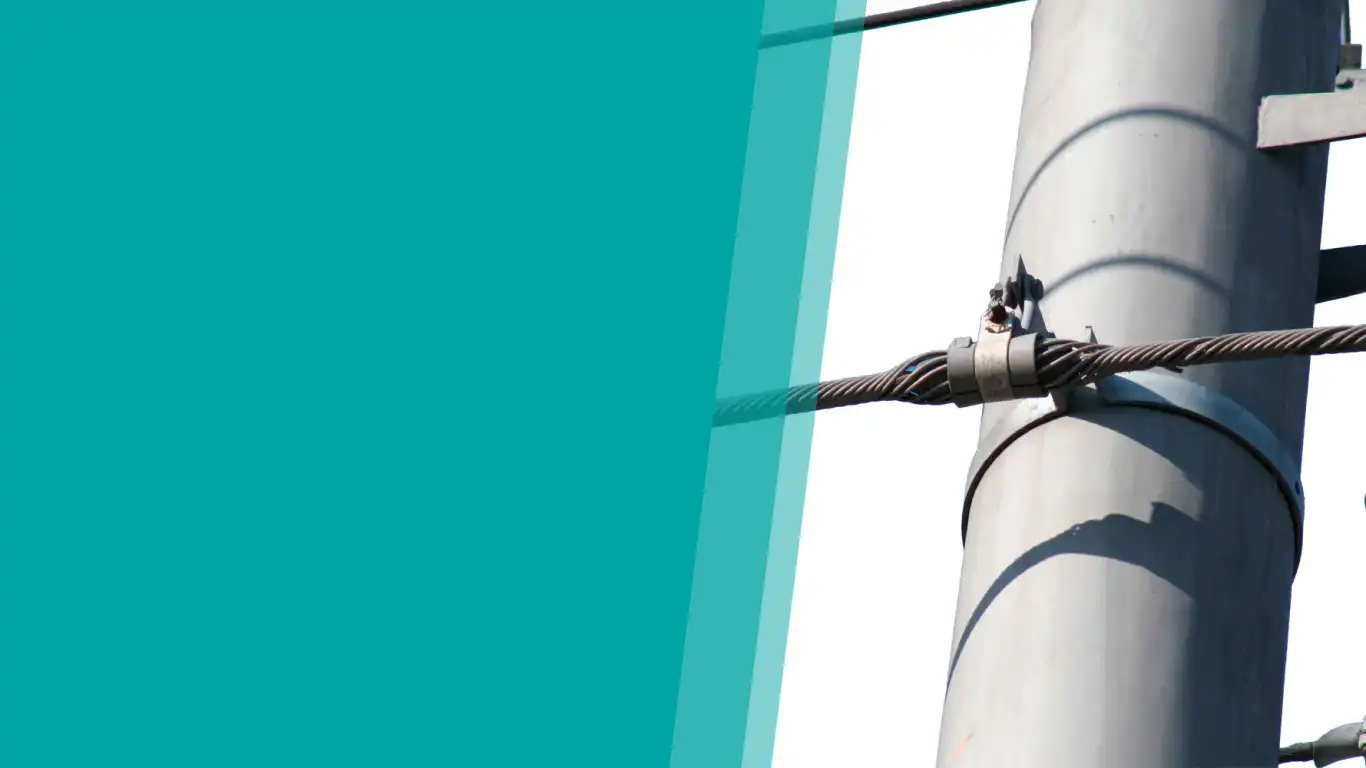
Formed Wire Dead End
Formed Wire Manufacturer
TTF Power manufactures and supplies formed wire products and accessories for power transmission and distribution systems. Our formed wire products are made of wires and strands that have been previously been preset during manufacture into the helical structure that they take in the completed rope. A greatly preformed rope reduces internal stresses, eases rope handling and gives more distribution of load on the wires and strands.
Formed wire is also known as preformed wire, helical or shaped wire. They are used in the overhead transmission lines to protect the conductors from abrasion and corrosion caused by the strong winds.
They run smoother and uniformly, give greater flexibility and gives longer service life in bending. The preformed wires can be in categorized according to the area of application which includes transmission, distribution, substation and fiber utility.
Types of formed wire
- Distribution tie
- Dead end grip
- Armor rod
- Suspension clamp
- Line guards
- Spiral vibration damper
- Conductor splice
Distribution tie
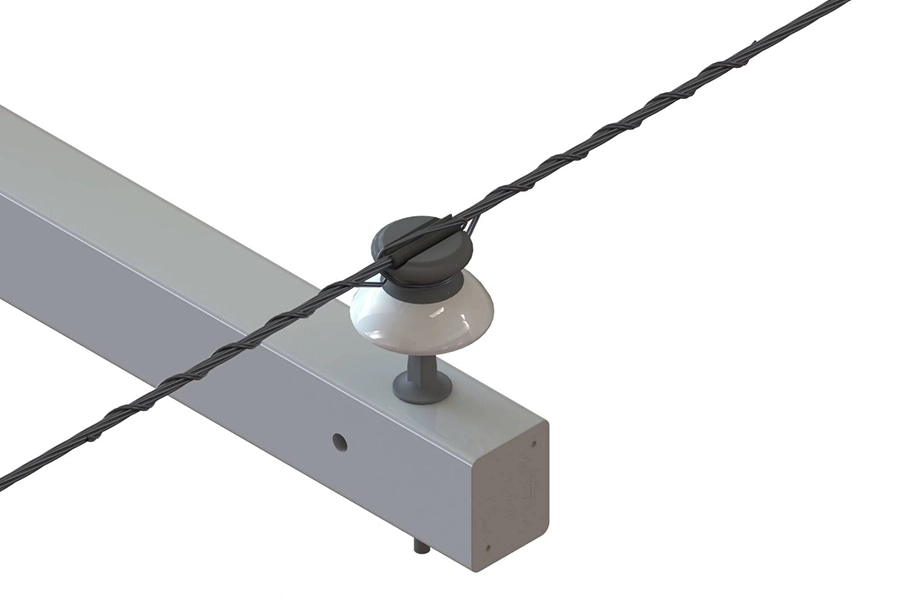
Distribution tie is used as an alternative for armor rods as it has a tie wire and encased with an insulator. A distribution tie is installed with a pad when used on the naked conductor. Its main purpose is to offer protection against abrasion due to the constant movement of the conductor. They are made from aluminum steel to help secure the conductors to the top groove of the interchangeable insulators.
Types of distribution ties
- Top tie – this is used to secure the line conductor to the top groove of the pin insulator.
- Side tie – this is used to mount the conductors to the side groove of insulators.
- Spool tie – is used to tie the conductors to the spool insulator.
Benefits of distribution tie
- They provide superior abrasion protection for the conductor under all types of stress.
- The tube component surrounds the bare conductor with a resilient cushion.
- Plastic line ties are also offered as an alternate to metal ties applied over plastic jacketed conductor.
- They provide an improved method of securing conductor compared to clamp top insulators or hand ties over armor rods.
Dead end grip
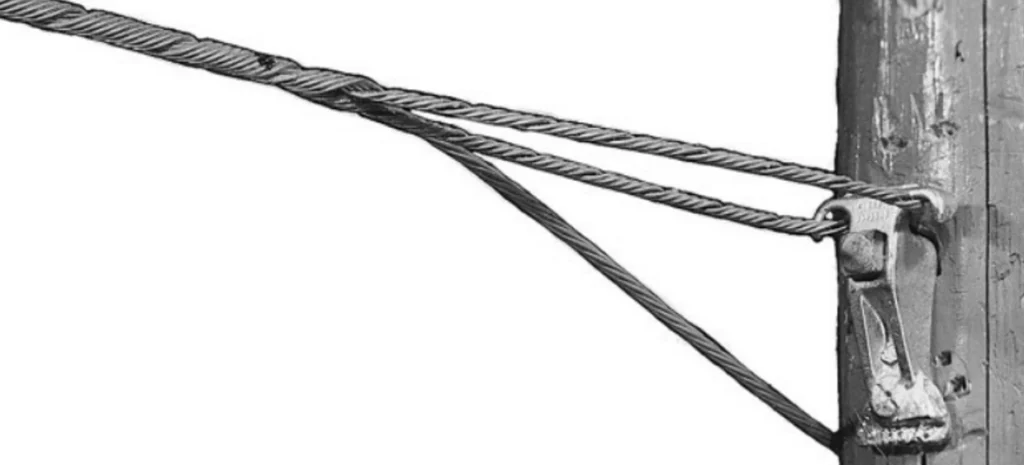
This type of preformed wire is designed to create a tight grip on the conductor. The grip prevents distortion of the conductor from external forces as the grip is uniform. The design provides the required holding strength that will support the continuation of the conductors. It is easy to install as it has a simple design. It is highly recommended for stay termination on wood pole construction.
Types of dead end grip
- Guy grip dead end – They are suitable for stay rod, stay insulator and pole top attachment, single, multiple and flying stays can be terminated.
- Big grip dead ends – these are recommended for stay exceeding 27m length.
- Big grip wire rope dead ends are specified for termination of wire rope.
Benefits of dead end grip
- They are made of material compatible with the strand to which they are applied.
- Lay direction must be the same as that of the outer layer of the strand with which it is used.
- The loop of the guy grip dead end is designed for use with thimbles and stay rod eyes having smooth contours, diameter, and groove widths which will adequately support the loop of the fitting.
- They have simple structures which make them easy to install.
- They have high grip strength for breaking load.
- They are resistant to corrosion mainly because the materials are the same as the materials on the conductor which prevent electrochemical corrosion.
Armor rod
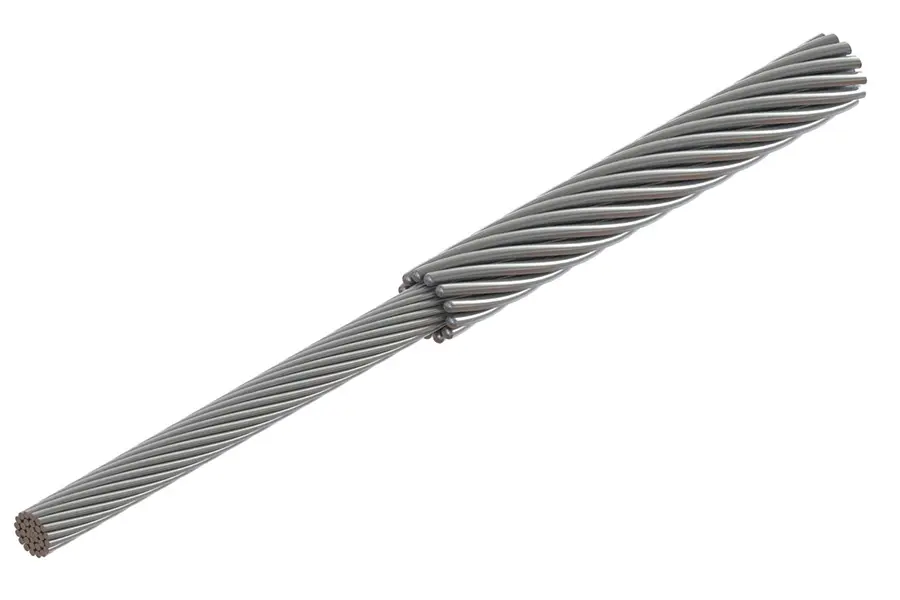
These formed wires play a protective role on the transmission lines as they shield the conductors from the effects of bending, abrasion and compression. They are easy to install and they are marked with a different color from the rest of the formed wires.
Benefits of armor rods
- They are made from aluminum wire, galvanized wire or steel wire to help them protect the conductors to all type of weather hazards.
- The armor rod material is similar to the conductor material to avoid corrosion between different elements.
- They have different color codes to help identify the conductor size easily.
- The double layered preformed armor rods wrap the conductor tightly thus it will decrease the abrasion between the conductor and the armor rod.
- Single and double support lengths are available to offer maximum support.
- They have a continuous thermal rating within high temperature repair.
- They have a parrot-bill end to meet the corona onset and RIV requirements for most applications.
Suspension clamp
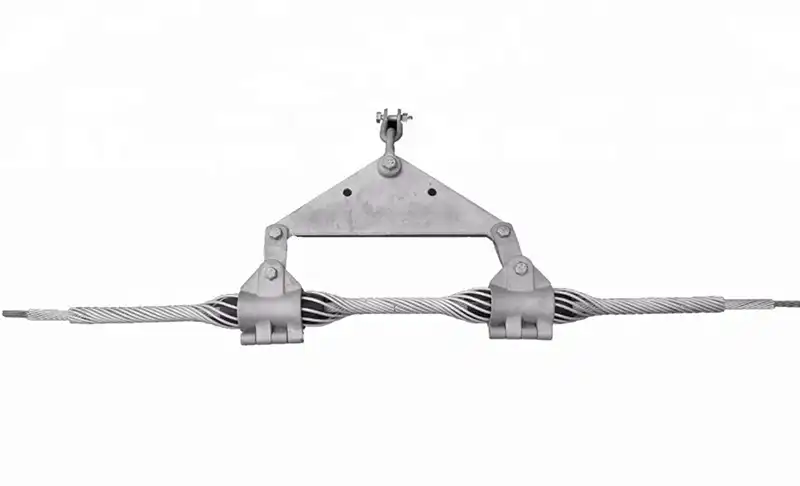
This is a formed wire that is used for clamping conductors along the longitudinal axis. The arms of the clamp are extended outwards on the opposite side of the conductor. The sections of the conductors are rested on the arms where the cable is free to oscillate within the given arms.
Features of suspension clamps
- They are easy and fast to install as they do not require any tooling.
- They are mostly used to protect the ABC cables.
- They can be used for different angles up to 60 degrees.
- Can be able to withstand high temperatures.
Applications of suspension clamps
- They are used to protect the conductors at the installation load.
- They offer a safe and viable mechanical connection regardless of the condition by providing and adequate longitudinal grip control.
- They control the movement of the conductor which provides protection against the vibrations induced by the strong winds.
Line guards
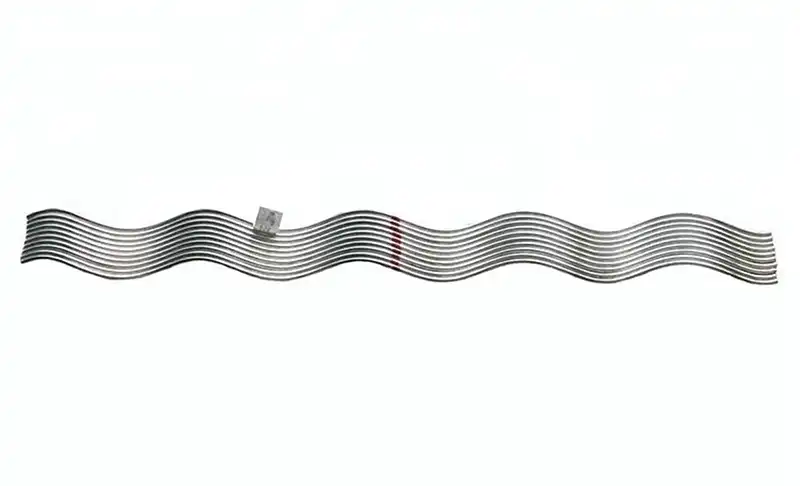
The line guard is designed to protect the conductor by reducing the bending which in return minimizes the effects of corrosion and abrasion on the conductors. The protection provided by the line guard depends on the environmental factors, temperature and tensional forces that are exerted on the conductor.
Features of line guards
- They are made of materials that are able to resist the different weather conditions
- They help protect the conductors from abrasion and cut that may be caused by animals and other stresses.
- They are easy to install and use.
- They are suitable for different sizes of the cables.
- They can be used on different frequencies on the line.
Benefits of the line guards
- They protect against chafing or wear caused by swinging from winds or unbalanced loads.
- They have stronger material and greater uniformity than hand tie wire.
- The offer single and double support lengths.
Spiral vibration damper
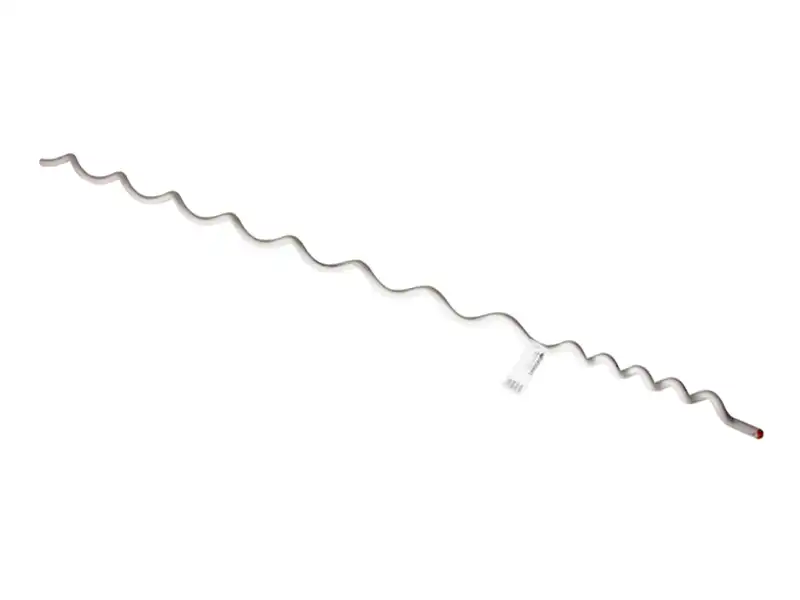
The sole purpose of the spiral vibration damper is to reduce vibrations on the conductors. This helps reduce the stress that is caused by the vibrations of the conductors. The installation can either be single installation or double installation. They are used with other conductors to handle the different power capacities. It is non corrosive and can withstand high temperatures.
Benefits of spiral vibrations damper
- They are made of non-corrosive PVC material that is weather resistant.
- They are made with color codes to help show cable size and diameter.
- They help to reduce weather-induced vibrations.
- They have a simple structure that makes them easy to install.
- The spiral design enables the connection to the conductors.
- They are effective in a broad range of frequencies.
- Provides impact-reactive damper protection with the helically formed plastic rods.
Applications of the spiral vibrations damper
- They are used in distribution spans.
- They are used in overhead shield wires
- They can be used in optical ground wires and overhead ground wires.
- They are used in spans of over 800 feet.
Conductor splice

This type of formed wire is used to join two or more conductors so that they end up forming a strong mechanical bond at the point of their union. The joining also forms an electrical termination point such that the electric current cannot flow beyond that point. The conductors can be welded or soldered at the splice in order to enhance their bond.
Types of conductor splices
- Western union splice — are used to connect small, solid conductors
- Staggering splice — are used when joining small multi-conductor cables to prevent them from being large and bulky.
- Rattail joint — this is a splice used in a junction box and for connecting branch circuits at the rattail joint.
- Fixture joint — this is used to connect a small diameter wire to a larger diameter wire used in branch circuit.
- Knotted tap joint — used in joining a branch conductor to a continuous main wire.
- Wire nut and split bolt splices — the wire nut is mostly used to replace the rattail joint.
Preformed wire accessories
Suspension and support are those product designed to reduce the static and dynamic stresses at the support point which makes the conductor protected against the effects of the oscillations caused by the strong winds. These include:
Aluminum suspension clamp
Aluminum suspension clamp — this is intended for use on all aluminum-based conductors. The armor rods are placed on over the conductors at suspension points to minimize the static and dynamic stresses at the ends of the clamps. They are have an aluminum alloy body, galvanized steel hardware keeper and a stainless steel cotter pin.
- They are compatible with standard attachment hardware
- They are shipped and assembled with no loose parts
Cushion grip suspension
Cushion grip suspension — they are intended for use on all aluminum based conductors and are designed to reduce the static and dynamic stresses at the support point. The conductor is cushioned by field proven, integral elastomer inserts which guard against abrasion, wear and fatigue.
- They are simple and easy to install
- The cushion minimizes conductor bending stresses at critical entry locations.
- They have an easy hot stick application.
- They have no loose parts
- They are compatible with standard attachment hardware.
End sleeves
End sleeves — these are used to ensure the proper application of guy grip dead ends and big grip dead ends.
They are made from galvanized steel and are compatible with guy grip dead ends and big grip dead ends.
They are designed for galvanized bridge strand and aluminum-clad steel cables.
Tension dead ends
Tension dead end — this is a dielectric dead end designed to terminate short span, low tension ADSS fiber optic cables in low voltage environments. It is a single layer component that offers an economical solution for very light loads.
- They have standard design parameters.
- They have a single economic component design.
- They have a simple structure and easy to install.
- They have a superior fatigue strength wire design.
Dielectric suspension
Dielectric suspension — this is specifically designed for installation on ADSS cables and is different than suspension OPGW.
They have a double layer of rods that offer critical protection against tearing of the plastic jacket during unbalanced longitudinal loading of the cable while providing substantial holding strength.
It uses a combination of structural reinforcing rods to reduce compression clamping and bending stresses on the cable and glass fibers.
The double layer of rods offers critical protection against tearing of the plastic jacket during unbalanced longitudinal loading of the cable while providing substantial holding strength.
Dielectric dead end
Dielectric dead end — the dead end component is required to transfer axial tensile loads and distribute radial compressive forces through the plastic jacket and onto the internal strength members without damaging the fragile plastic jacket or internal optical fibers.
The fittings and grounding accessories can be included in the same container with the suspension.
They offer limited tension, medium tension and high tension dead ends.
ADSS corona coil
ADSS corona coil — these are designed to reduce electrical stress at the ends of the metal rods of dielectric dead ends and suspensions applied on ADSS cables installed in high voltage electrical fields.
They are made from light material that help during the swinging of the cables caused by strong winds.
- They have a simple design and are quickly installed with no tools.
- They are intended to suppress electrical arcing at the ends of metal rods.
- They are designed to be used with dielectric dead ends or suspensions.
FAQs
What is a formed wire?
A formed wire is a helical shaped wire which is made using a wire spool. It can transform to almost any form depending on the application, often including sets of various lengths and sizes.
What types of formed wire are commonly used?
There are seven common types of preformed wire:
- Insulator Tie
- Dead End Grip
- Armor Rod
- Suspension Clamp
- Line Guards
- Spiral Vibration Damper
- Conductor Splice
How to choose the best formed wire product?
- Clarify the requirement for your application.
- Choose the suitable material, i.e. aluminum, steel, aluminum alloy, etc.
- Consult an expert at support@ttfpower.com

